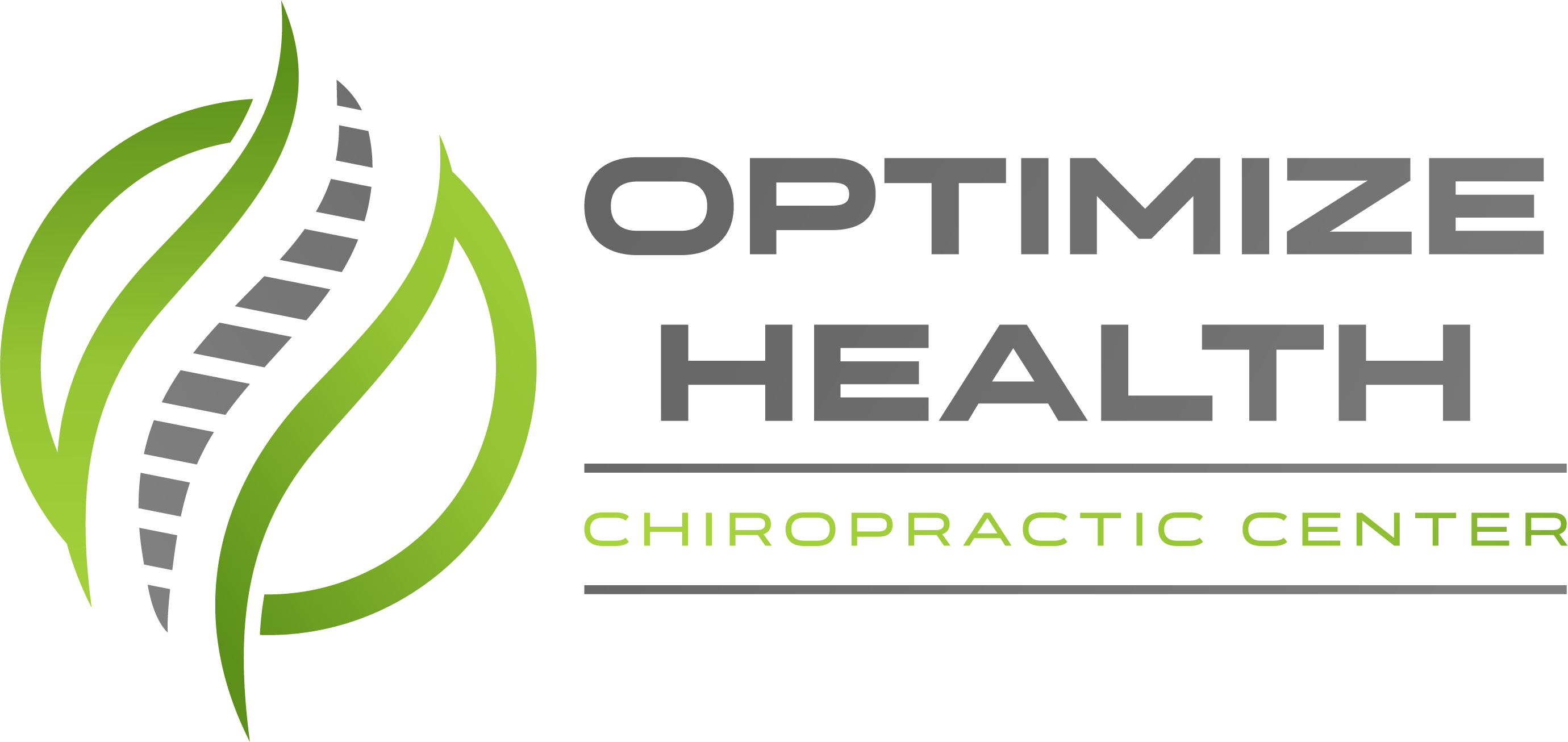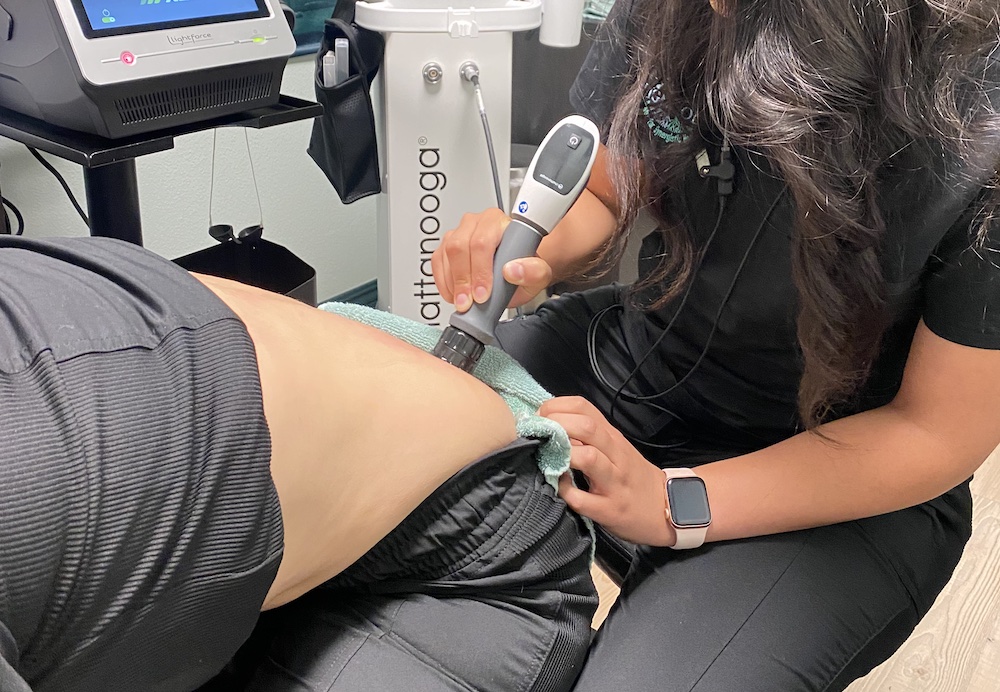If you're experiencing back pain, know that you're not alone, and finding relief can be simpler than you think. As a local chiropractor, I want to share some effective methods that can help you feel better. Incorporating stretching and strengthening exercises into your daily routine can significantly improve your back health. Additionally, paying attention to your posture while sitting, standing, or moving can make a big difference.
I often recommend using heat and cold therapy to soothe discomfort. Heat can relax tense muscles, while cold can reduce inflammation. These simple tools can provide immediate relief.
It's also worth considering alternative treatments, such as chiropractic adjustments, which focus on realigning the spine and improving your body's overall function. This can enhance your recovery and promote long-term wellness. However, it's essential to understand that no single approach is a one-size-fits-all solution. The best results often come from combining various techniques tailored to your specific needs.
Let's work together to find the right combination of methods that will support your journey to better health and well-being. Your comfort and recovery are my top priorities.
Stretching Exercises
As a chiropractor, I understand that back pain can be a frustrating and debilitating experience. One of the most effective ways to manage this discomfort is by incorporating stretching exercises into your daily routine. Stretching isn't just about flexibility; it also helps relieve tension and promotes healthy blood circulation to the affected areas of your back.
I recommend starting with gentle stretches to avoid any additional strain on your muscles and joints. One of my favorite stretches is the cat-cow stretch. To perform this exercise, get on your hands and knees, then alternate between arching your back upward towards the ceiling and dipping it down towards the floor. This rhythmic movement is excellent for loosening your spine and alleviating tension in your lower back.
Another stretch I often suggest is the child's pose. Begin by sitting back on your heels, then stretch your arms forward and lower your chest toward the floor. Hold this position for 20-30 seconds while taking deep breaths. This stretch not only targets your back but also provides a calming effect for your mind, which is essential in managing pain.
Additionally, tight hamstrings can often exacerbate back pain, so it's important to address them as well. A simple hamstring stretch can be done by standing, placing one foot on a low surface, and gently leaning forward until you feel a stretch in the back of your thigh. Hold this stretch for 20 seconds and then switch sides.
Incorporating these straightforward stretches into your daily routine can be a game-changer in managing your back pain naturally. Always pay attention to your body's signals—never push yourself too far.
With consistent practice, you may notice significant improvements in your flexibility and a reduction in discomfort. Remember, chiropractic care works best when combined with healthy lifestyle choices, including regular stretching and exercise.
Strengthening Workouts
As a chiropractor, I often see patients struggling with back pain, and one of the most effective ways to address this issue is through strengthening workouts. These exercises focus on the muscles that support your spine, enhancing your overall stability and significantly reducing the risk of future injuries. By strengthening your core, back, and hip muscles, you create a solid foundation that alleviates stress on your spine.
I recommend starting with foundational exercises such as planks and bridges. Planks are excellent for engaging your entire core, while bridges specifically target your glutes and lower back. As you become more comfortable with these movements, consider adding variations to keep your muscles challenged. For example, side planks introduce an additional twist, and single-leg bridges can improve your balance and stability.
It's also crucial not to neglect your lower back and hip flexors. Incorporating exercises like deadlifts and bird-dogs into your routine can be very beneficial. Deadlifts strengthen your lower back, while bird-dogs promote coordination and engage your core effectively. Aim for two to three sets of 8 to 12 repetitions for each of these exercises.
Consistency is vital in any strengthening program. I advise scheduling your workouts at least three days a week, allowing for adequate recovery time between sessions. Start slowly and prioritize proper form to prevent strain or injury. If you're uncertain about your technique, don't hesitate to seek guidance from a qualified trainer or a chiropractor.
Lastly, always listen to your body. If you experience pain during any exercise, it's important to stop immediately and consult a professional.
Posture Correction
As a local chiropractor, I want to emphasize the importance of posture in maintaining a healthy back. While strengthening your muscles is crucial for back health, being mindful of your posture can make a significant difference in preventing pain and discomfort. Many patients I see underestimate the impact that poor posture can have on their spine.
Let's start with sitting. When you're seated, aim to keep your feet flat on the floor, your back firmly against the chair, and your shoulders relaxed. If you spend long hours at a desk, investing in an ergonomic chair that supports your lower back can be incredibly beneficial. This small change can help alleviate the strain on your spine during those long working hours.
When it comes to standing, it's essential to distribute your weight evenly on both feet and keep your shoulders back. Slumping or leaning forward might feel comfortable, but it places unnecessary pressure on your spine. I often recommend exercises such as yoga or Pilates to my patients because they promote awareness of posture and help reinforce good alignment while enhancing flexibility.
As you walk, remember to keep your head up and your spine straight. Picture a string pulling you up from the top of your head—this visualization can help you maintain proper alignment. If you find yourself standing for prolonged periods, take breaks to walk around and stretch. This practice not only relieves tension but also helps reset your posture.
Finally, let's talk about your sleeping position. A supportive mattress and pillow are vital for keeping your spine aligned throughout the night. Paying attention to how you sleep can greatly influence your overall back health.
Heat and Cold Therapy
As a local chiropractor, I want to share some valuable insights on managing back pain through heat and cold therapy.
These techniques can be incredibly effective for those unfamiliar with chiropractic care and natural healing methods.
Heat therapy is wonderful for relaxing and soothing tight muscles, making it a great option when you're experiencing stiffness or discomfort.
It promotes blood flow, which can help alleviate tension and enhance the healing process.
On the other hand, cold therapy is excellent for reducing inflammation and numbing sharp pain.
Applying cold compresses can help manage swelling and provide relief after an injury or flare-up.
By understanding the unique benefits of both heat and cold therapy, you can make informed choices that complement your overall wellness journey.
I encourage you to explore these natural approaches to pain relief as part of your chiropractic care.
Benefits of Heat Therapy
As a local chiropractor, I often encourage my patients to consider the benefits of heat therapy for relieving back pain. Many people find that this simple and natural approach can provide significant comfort and relaxation.
When you apply heat to your back, it helps to increase blood flow to the affected area, which promotes healing and reduces stiffness. This enhanced circulation can also help relax tight muscles, alleviating tension and discomfort.
There are numerous ways to apply heat, such as using heating pads, warm towels, or enjoying a soothing hot bath. The warmth penetrates deep into your muscles, offering a calming effect that many find beneficial.
Heat therapy is particularly effective for managing chronic pain, as it can be incorporated into your routine to help keep symptoms in check.
Moreover, the positive effects of heat therapy extend beyond pain relief. When you feel comfortable, you're less likely to dwell on your discomfort, which can enhance your overall mood and allow you to enjoy daily activities more fully.
You may also notice improved flexibility, making it easier to engage in exercises that support your back health.
However, it's important to use heat therapy safely—avoid applying heat for prolonged periods to prevent burns.
I recommend incorporating heat therapy into your routine to see how much relief it can bring. It may just become a vital part of your toolkit for managing back pain naturally.
As your chiropractor, I'm here to guide you in exploring all the options available for your healing journey.
Advantages of Cold Therapy
As a local chiropractor, I want to share with you the benefits of cold therapy, especially when it comes to managing back pain. Many people aren't familiar with how effective this technique can be, particularly when used alongside heat therapy. Cold therapy involves applying cold packs or ice to the affected area, and it can provide significant relief.
Here are some key advantages of incorporating cold therapy into your pain management routine:
- Reduces Inflammation: Cold therapy works by constricting blood vessels, which helps to minimize swelling and inflammation in your back muscles. This is crucial in the healing process, as inflammation can lead to prolonged discomfort.
- Numbs Pain: The cold sensation effectively dulls nerve activity, offering immediate relief from acute pain. This can be particularly beneficial if you're experiencing sharp, sudden pain in your back.
- Prevents Further Injury: By alleviating pain and reducing inflammation, cold therapy helps you avoid exacerbating any existing injuries. This is vital for allowing your body to heal properly and safely.
- Improves Mobility: Once the pain subsides, you'll likely find that it's easier to move around and engage in your daily activities. Improved mobility is an essential step toward recovery and maintaining an active lifestyle.
When you choose to use cold therapy, I recommend applying it for 15-20 minutes at a time. Make sure to use a barrier, like a towel, between the ice and your skin to prevent frostbite. This method is especially beneficial right after physical activity or following an injury.
By integrating cold therapy into your routine, you can experience a noticeable improvement in managing your back pain.
As your chiropractor, I encourage you to explore these natural healing techniques and consider how they can complement your overall treatment plan. Your journey to relief and recovery is important, and I'm here to support you every step of the way.
Alternative Treatments
As your local chiropractor, I understand that traditional treatments for back pain may not always provide the relief you're seeking.
That's where alternative therapies come into play. Techniques such as acupuncture and chiropractic adjustments can be incredibly beneficial in managing your discomfort.
Acupuncture works by targeting specific points on your body to relieve pain, while chiropractic care focuses on realigning your spine, which can enhance your overall mobility and well-being.
By exploring these natural healing options, you may find a new way to effectively manage your back pain.
I'm here to guide you through these treatments and help you discover the best path to recovery.
Acupuncture for Pain Relief
As a local chiropractor, I want to share how acupuncture can be an effective tool for alleviating back pain. This time-honored practice involves the gentle insertion of thin needles at specific points on your body, which can promote natural healing and pain relief.
If you're exploring a holistic approach to managing your back pain, acupuncture may be a great option for you. Here are four key benefits of acupuncture that I think you should know about:
- Enhances Blood Circulation: The acupuncture needles stimulate blood flow in the affected areas, helping to deliver vital oxygen and nutrients that are essential for your recovery.
- Decreases Inflammation: Acupuncture can activate the release of natural anti-inflammatory substances in your body, which can help alleviate swelling and discomfort associated with back pain.
- Stimulates Endorphin Production: This natural practice encourages your body to produce endorphins, which act as your body's own painkillers and can contribute to an overall sense of well-being.
- Promotes Energy Balance: Acupuncture is based on the principle of balancing energy, or "qi," in your body. This balance can help improve your overall health and reduce the perception of pain.
By integrating acupuncture into your pain management strategy, you may find significant relief and a path toward a healthier, more balanced life.
If you have any questions or want to learn more about how this can work alongside chiropractic care, feel free to ask!
Chiropractic Adjustments Benefits
As a local chiropractor, I want to take a moment to share the incredible benefits of chiropractic adjustments, especially for those of you who might be unfamiliar with this natural healing approach. If you're dealing with back pain, chiropractic care can serve as a powerful addition to your wellness journey, complementing other therapies like acupuncture.
At the heart of chiropractic adjustments is the goal of aligning your spine and enhancing your overall function. By realigning your vertebrae, we can help your body heal itself naturally, significantly reducing pain and discomfort. This process often alleviates pressure on nerves and muscles, allowing you to experience relief that lasts.
One of the most notable advantages of chiropractic care is the improvement in mobility that many of my patients report. After just a few sessions, you might notice increased flexibility and a greater range of motion, making everyday tasks easier and more enjoyable. This is especially crucial for those of you who spend long hours at a desk or perform repetitive tasks, as chiropractic adjustments can also help promote better posture.
What sets chiropractic care apart is its holistic approach. We don't just focus on alleviating symptoms; we aim to uncover and address the underlying causes of your back pain. During your visits, I'll provide you with personalized lifestyle advice, exercise recommendations, and nutritional guidance that can help you create a comprehensive plan for long-term relief.
Ultimately, chiropractic adjustments offer a safe, non-invasive option for managing back pain. My goal is to equip you with the tools and knowledge you need to take control of your health and well-being. If you're curious about how chiropractic care can benefit you, I invite you to reach out and learn more.
Lifestyle Modifications
As a local chiropractor, I want to emphasize the significant impact your daily habits can have on managing back pain. By implementing a few simple lifestyle modifications, you can greatly enhance your comfort and overall well-being. Here are some important changes to consider:
- Enhance Your Posture: It's crucial to create an ergonomically friendly workspace. Ensure that you sit with your back straight, shoulders relaxed, and adjust your chair height so that your feet are flat on the floor. This will help alleviate unnecessary strain on your spine.
- Stay Active: Engaging in regular exercise is vital for strengthening your core muscles, which provide essential support to your spine. Activities such as walking, swimming, or practicing yoga can help keep your body agile and reduce stiffness, which is key in managing back pain.
- Maintain a Healthy Weight: Carrying excess weight can place additional stress on your back. A balanced diet, combined with consistent exercise, can assist you in achieving and maintaining a healthy weight, ultimately reducing strain on your spine and improving your overall health.
- Prioritize Quality Sleep: Quality sleep is essential for recovery from back pain. I recommend investing in a supportive mattress and pillow that align with your body's needs. Additionally, establishing a consistent sleep schedule can promote restful nights, allowing your body to heal and rejuvenate.
By making these modifications, you can take an active role in your back health and experience improved comfort in your daily life.
Conclusion
As your local chiropractor, I want to share some effective techniques for alleviating back pain that you can easily incorporate into your daily life. Practicing stretching and strengthening exercises is essential in supporting your spine and improving your overall back health. Additionally, maintaining good posture throughout your day can significantly reduce strain on your back.
Utilizing heat or cold therapy can also provide immediate relief from discomfort, helping to soothe inflamed areas. I encourage you to explore alternative treatments, such as chiropractic adjustments, which can realign your spine and enhance your body's natural healing processes.
It's also important to make lifestyle modifications that can aid in your recovery, such as staying active, maintaining a healthy weight, and ensuring you have a supportive mattress. Remember, each individual is different, so it's crucial to find the methods that resonate with you. Take the first step today towards a pain-free life by embracing these natural healing techniques!



